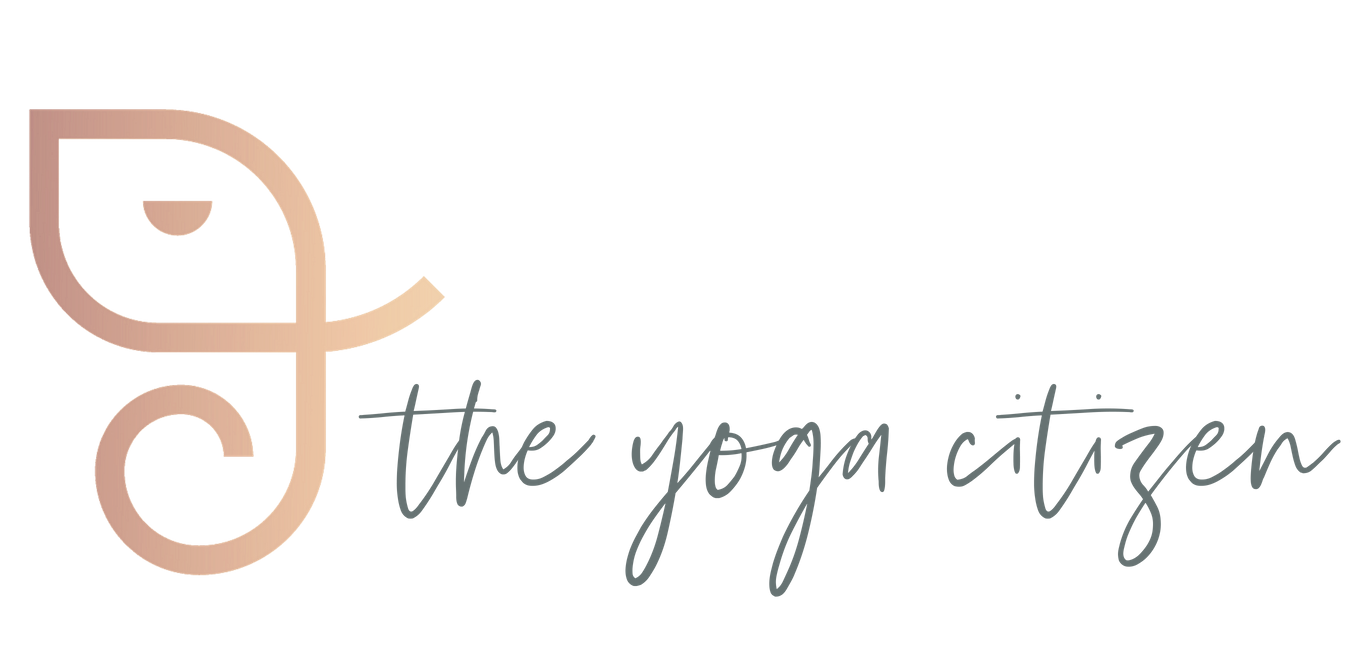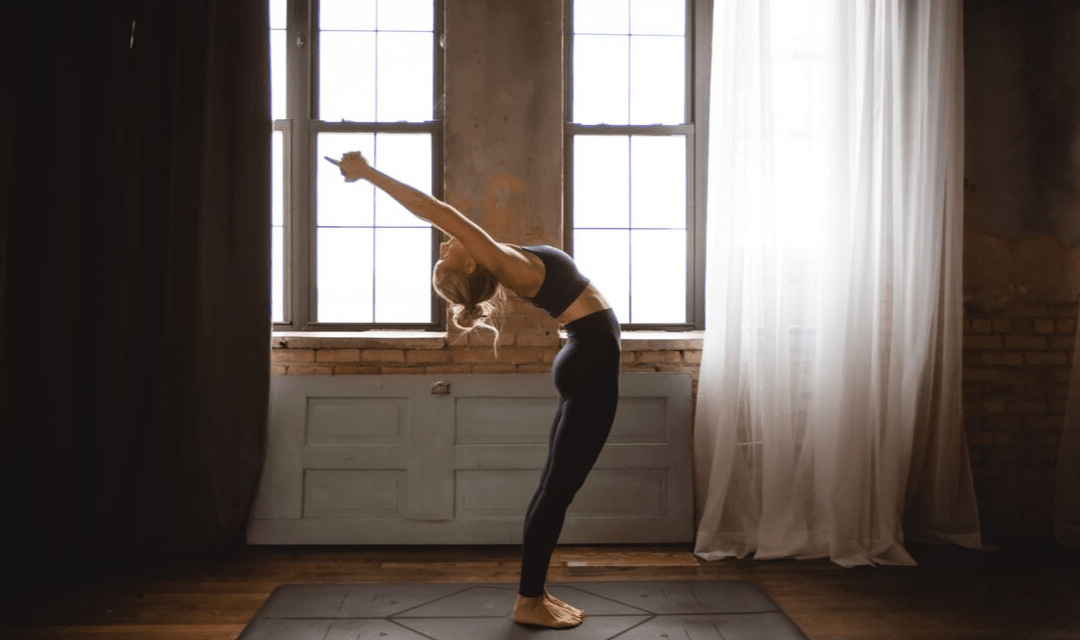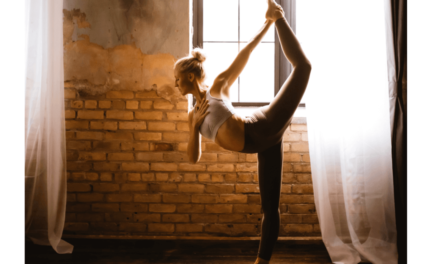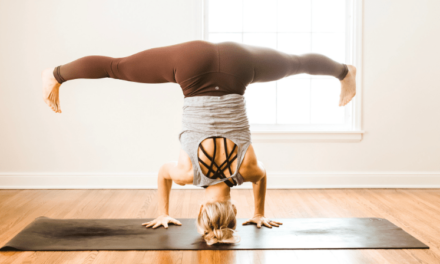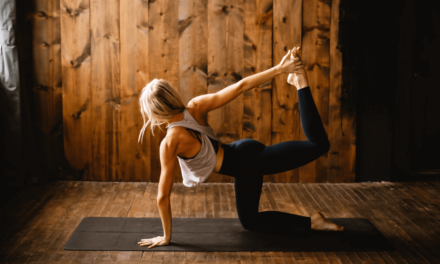What do you do when you reach a mental and physical challenge?
And I mean when you reach “your edge” when you need to decide what to do next in a perplexing situation?
Yoga not only aides our physical bodies to be more limber, flexible and strong, but it also teaches us how to practice these same qualities in our minds well after we say “namaste” and leave to go out into the world.
Yoga helps to teach us how to act when we meet our edge.
And backbends are some of the more powerful postures (asanas) we can do to experience and learn these lessons.
Why Do We Do Backbends?
How often do you bend backward in your day-to-day life? If something falls on the ground do you bend backward to get it, or fold over yourself to pick it up? (I would be very impressed to hear if you do a backbend to pick something off the ground!)
Like anything, too much of something can be just that, too much. Practicing regular backbends brings our spine back to neutral and invites stimulating and natural energy into our bodies.
Another notable reason we regularly practice backbends, in any yoga class, is to release and move stuck energy in our body, leaving us more balanced, strong, and mentally clear.
The physical act of a backbend challenges our breath and our bodies. And if we are to enjoy these beautiful postures and gain their benefits, we need to learn how to breathe through them. Or simply, we need to learn how to soften in them slow down.
Would that be something you would like to do when you encounter a situation in your life, rather than inviting stress, worry, and negative thoughts?
Yep, me too.
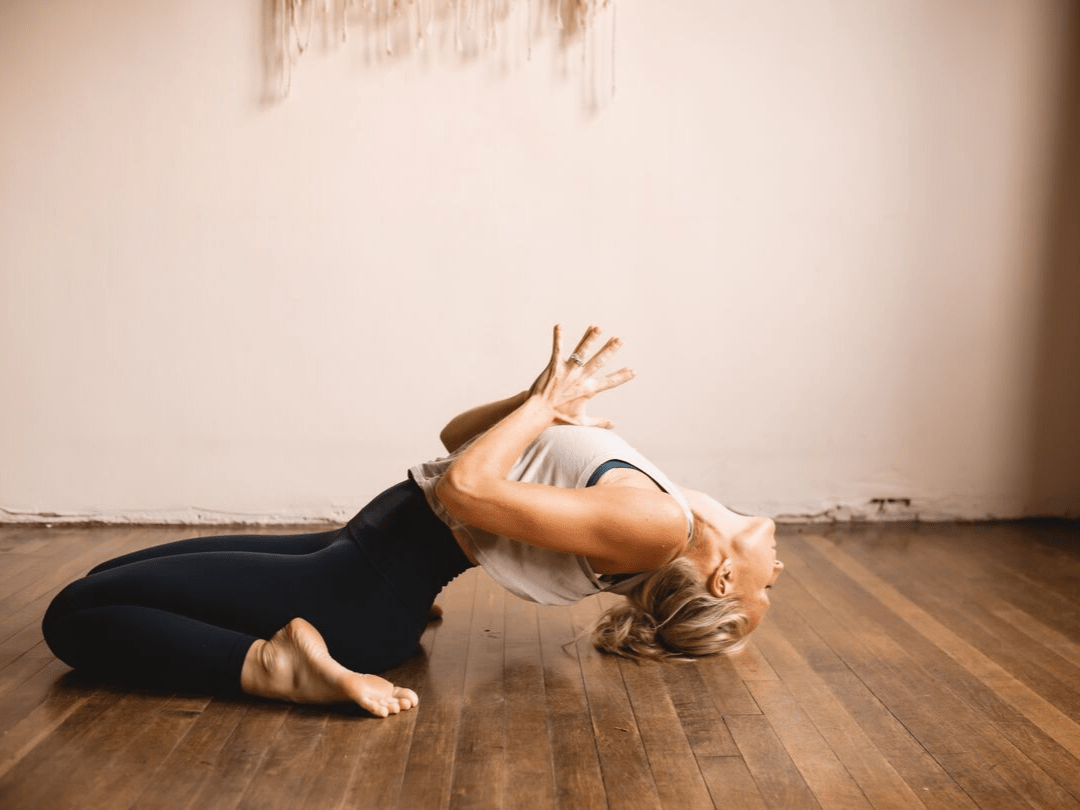
8 Benefits From Doing Backbends
- Anatomically speaking, backbends will do wonders for the body. We feel immediate energy when we exit out because of the compression we create on the kidneys while in the postures. And when we release, fresh oxygenated blood floods through our entire body, naturally energizing it.
- Backbends stimulate the sympathetic nervous system, also known as the fight or flight response, due to the compression of where the adrenal glands are located. In addition, backbends help to improve our immunity by tapping into our lymphatic system and lymph nodes to help move lymph fluid through to get rid of the gunk that has built up in our bodies.
- Backbends improve our posture because of all of the forward folds we do on the daily. They help to bring our spine back to neutral, which will help relieve stress and tension in the back and neck.
- Deep breathing, in general, will reduce stress by lowering cortisol in our bodies. Backbends challenge us to find a deep breath, only accelerating this process.
- The physical strength of backbends will invigorate our hip flexors, shoulders, and chest. They help to strengthen our arms, legs, and back muscles.
- Backbends also will help release emotions that we have bottled up inside. Sadness, anger, frustration, and love can all make an appearance after backbends.
- Backbends open the Heart Chakra, the space where our heart resides. We often go through life protecting this part of our body, think of curling up into a ball when we’re sad or scared because we tend to hide our vulnerabilities. Opening the Heart Chakra allows us to act with love in all that we do, which can take courage, especially in moments of conflict.
- And undoubtedly, backbends literally can give us a new perspective (upside down or otherwise) but turning our world upside down. You never know what you can experience with a new point of view.
How To Prepare For Backbends
A proper warm-up to backbends is essential for a safe and healthy practice. As most backbends are some of the “bigger postures” that we do on our mat, we need to prepare our bodies for the bigger advantages for practicing them.
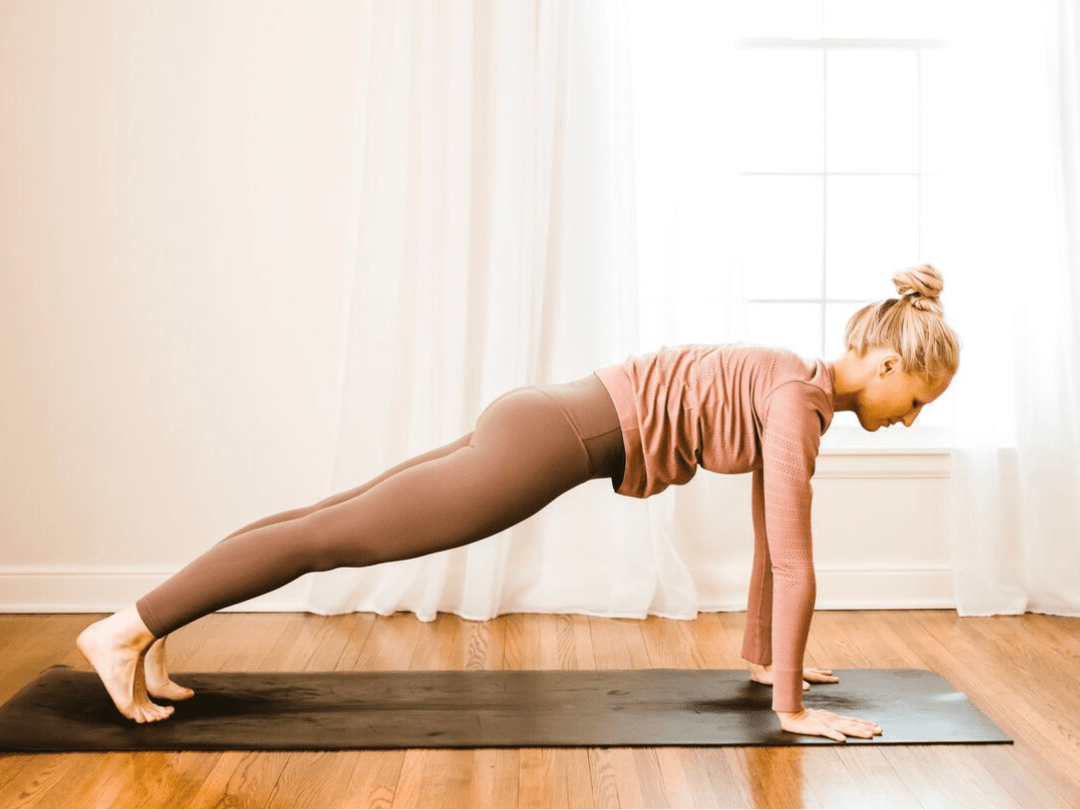
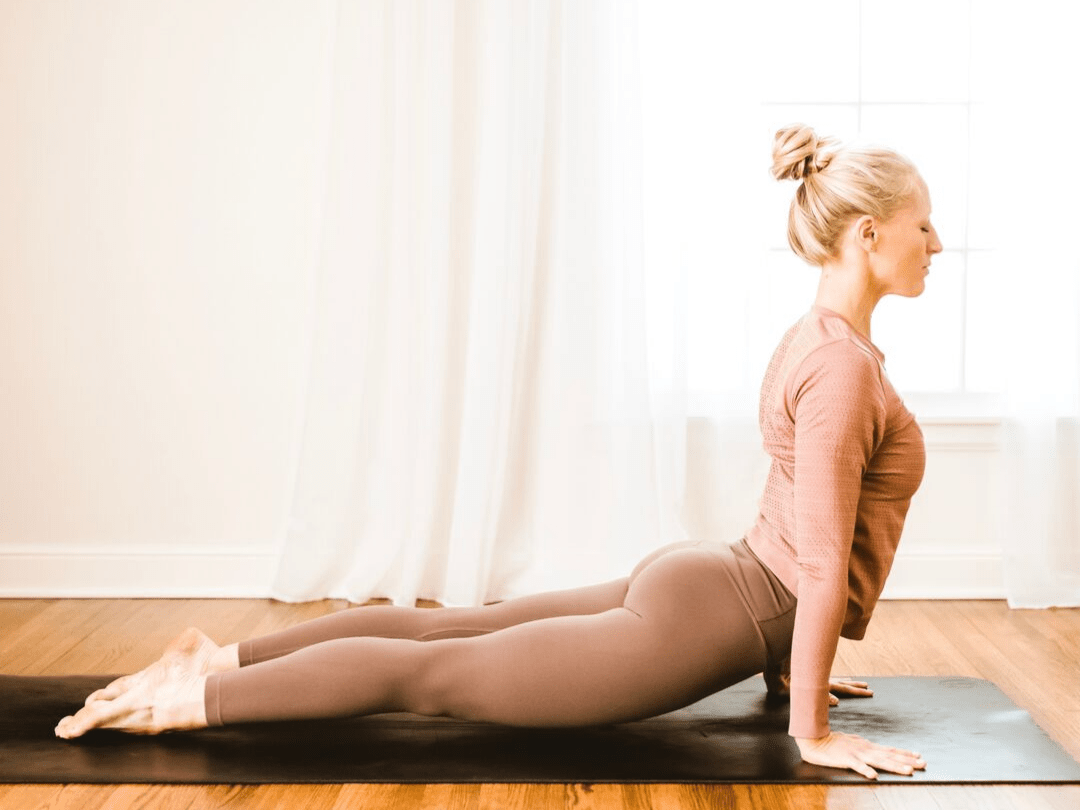
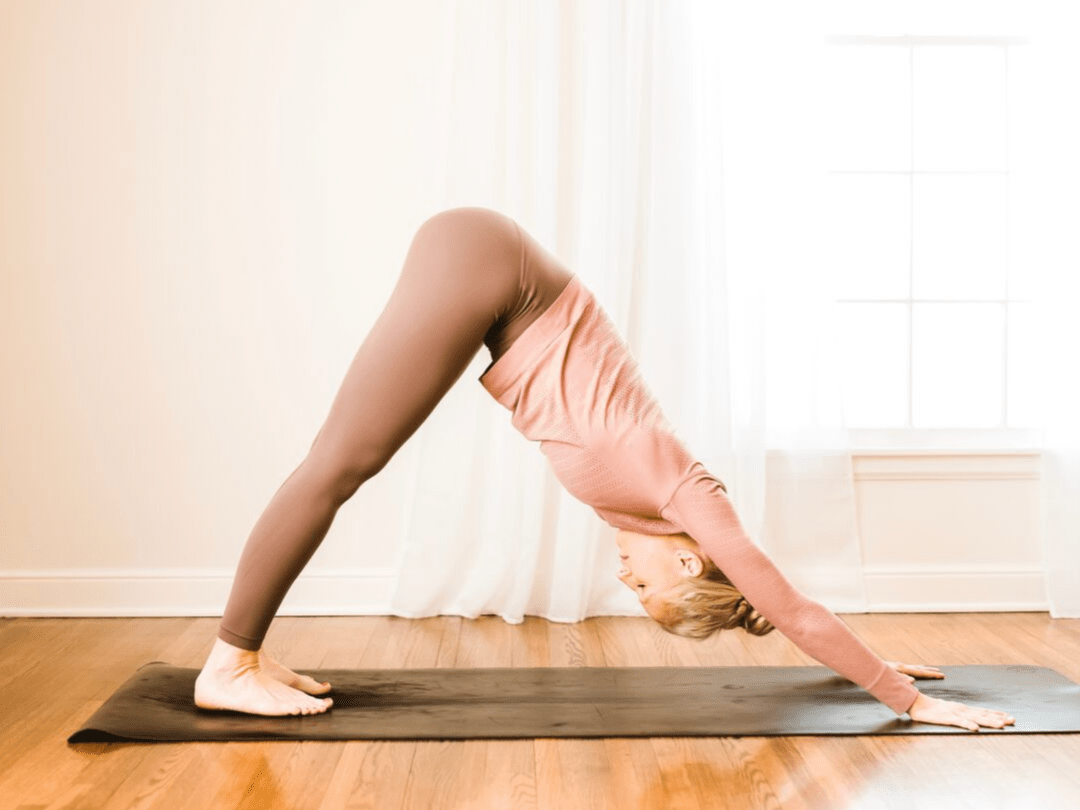
- Start with a warm-up of Sun Salutations to wake-up your physical body.
- Add in chest openers and shoulder stretches to increase mobility in these important physical parts of the body to bend backward.
- Practice some core strengtheners, such as planks, boat pose (Navasana), and the classic sit-up. Our core strengthens our back, only helping us more to stay safe in our practice.
- Ensure you have stretched your hips in runner’s lunge or half-pigeon to prepare for the opening of them in backbends.
- Strengthen your whole spine with cobra, locust, and bow pose to support your spinal muscles.
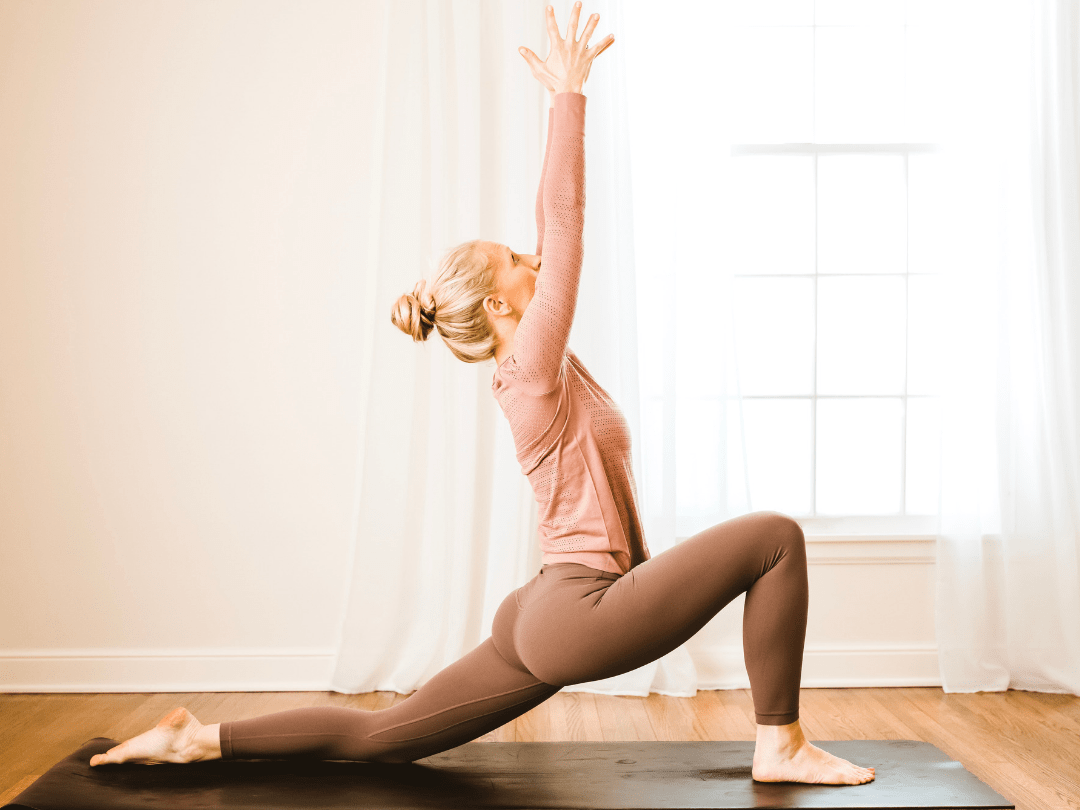
Backbends To Practice
Standing Backbend
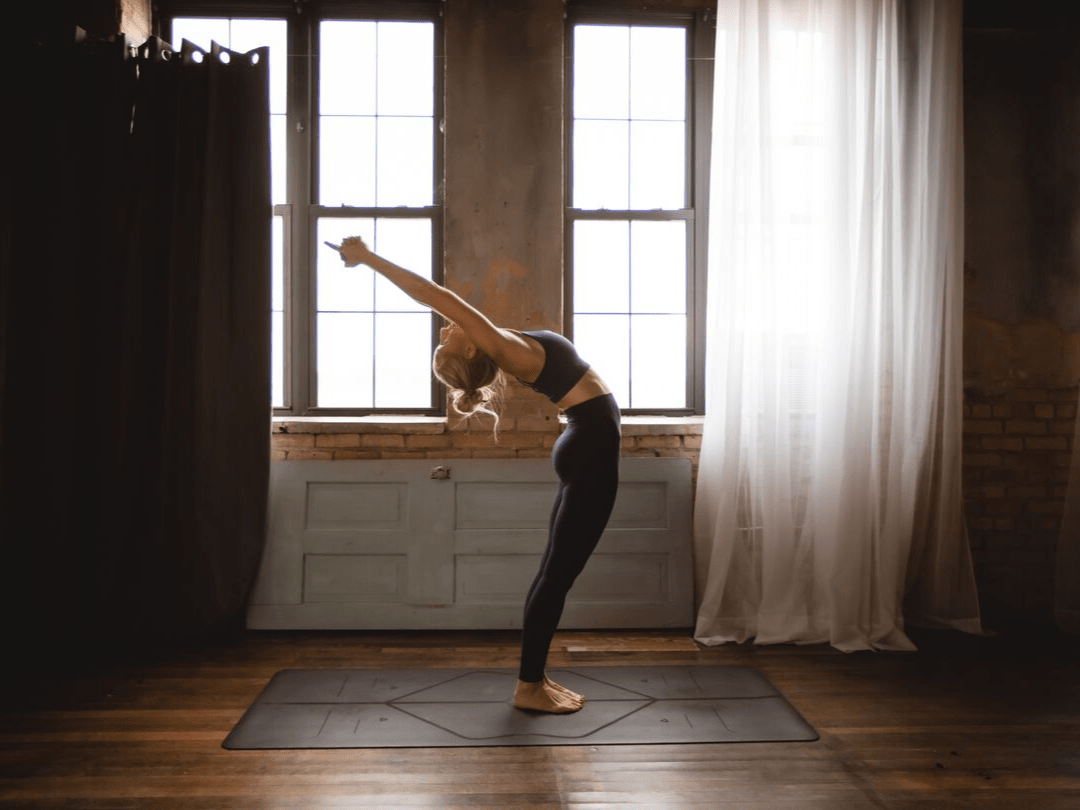
- Begin by standing in Mountain Pose.
- Inhale your arms overhead, interlace your fingers and release your index fingers. Draw your low belly in to protect your back and lift your chest and gaze upward to the ceiling.
- Exhale begin to walk your eyes back across the ceiling lifting your chest straight up and glide your hips forward.
- Hold for 3-5 breaths.
Camel (Ustrasana)
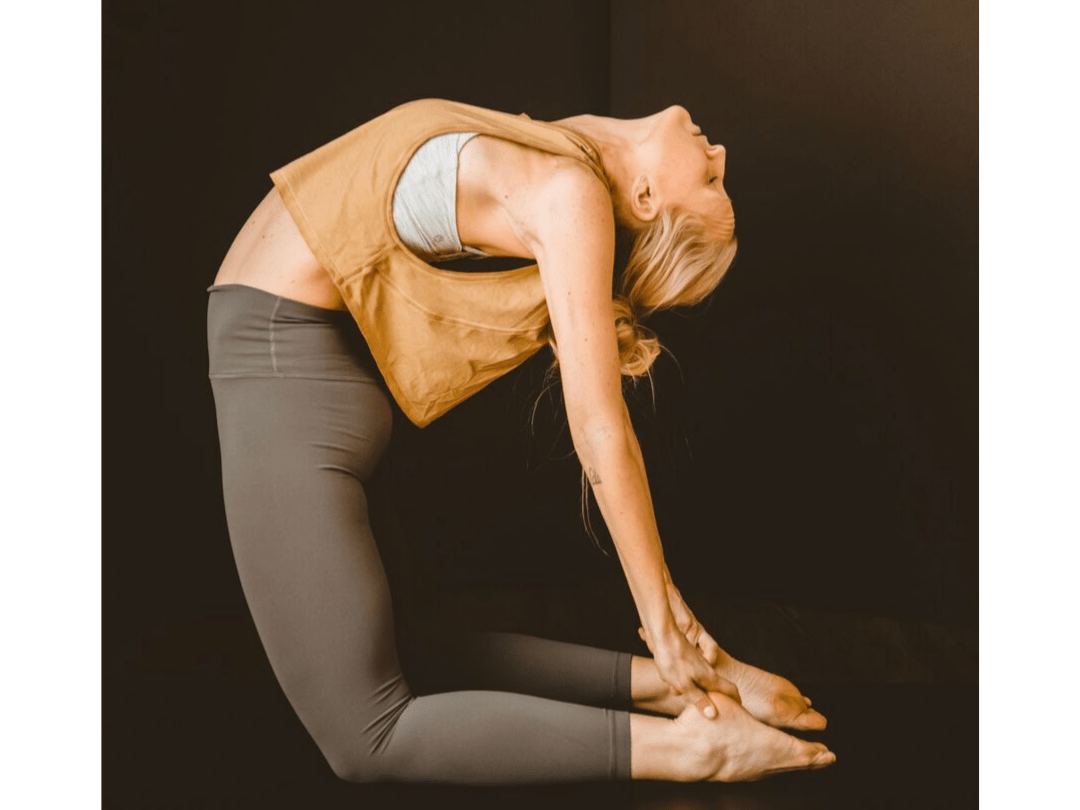
- Come to stand on your knees, hip-width distant apart. Place your hands on the small of your back (imagine you’re putting your hand in your back pockets) with fingers pointed down and thumbs out. Squeeze your shoulders blades in toward the midline of your body.
- Inhale, draw your low belly in and lift your chest and gaze toward the ceiling.
- Exhale begin to walk your eyes back across the ceiling.
- If you feel ready, you have the option to capture your heels with your hands or stay where you are with your hands on your low back.
- Hold for 3-5 breaths.
- Release out the same way you went in and take a seat on your heels and close your eyes to breathe.
Bridge (Setu Bandhasana)
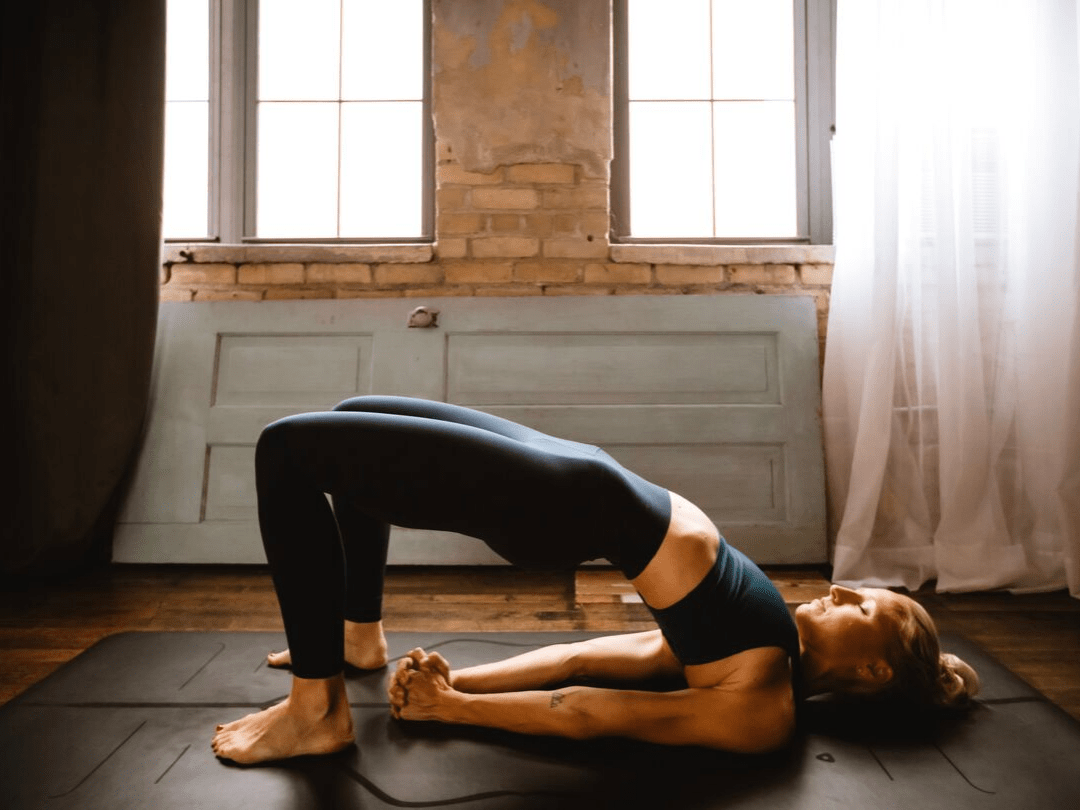
- Lay on your back with your feet planted close to your body, hip-width distant. Relax your arms down by your sides.
- Inhale press into your feet to lift your thighs and hips.
- Arms can stay, or roll your shoulders under you to clasp your palms together by interlacing your fingers. Press down through your forearms to actively lift your hips higher.
- Hold for 5-10 breaths.
- Slowly release and lower down. Allow your low back to root into your mat to find a neutral resting space.
Wheel / Upward Facing Bow (Urdhva Dhanurasana)
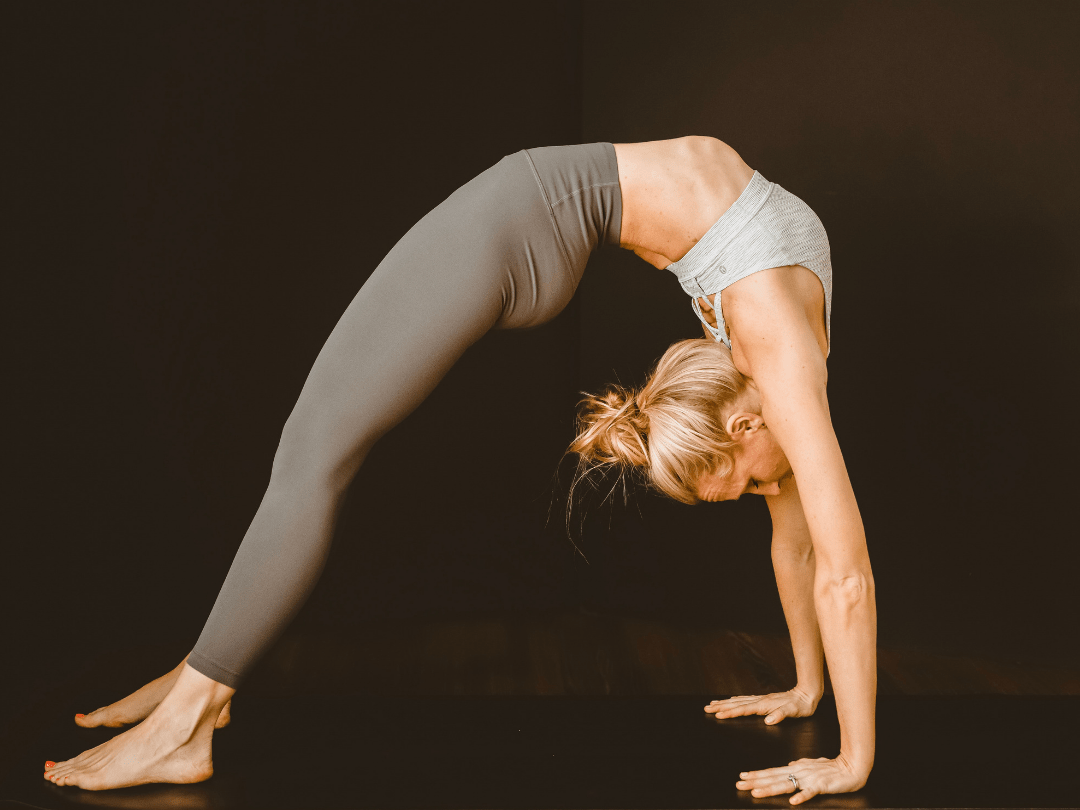
- Lay on your back with your feet planted close to your body, hip-width distant. Place your hands in either side of your ears with your fingers pointing forward.
- Inhale press down to lift up and place the crown of your head on your mat. Draw your elbows in then root through feet and palms to lift your hips higher to lengthen legs and arms.
- Hold for 3-5 breaths.
- Slowly release out and allow your low back to root into your mat to find a neutral resting space.
After any backbends, find a neutral spine once again to reset. Often a forward fold to counter the backbends will feel good in the body to find balance.
Life Lessons From Practicing Backbends
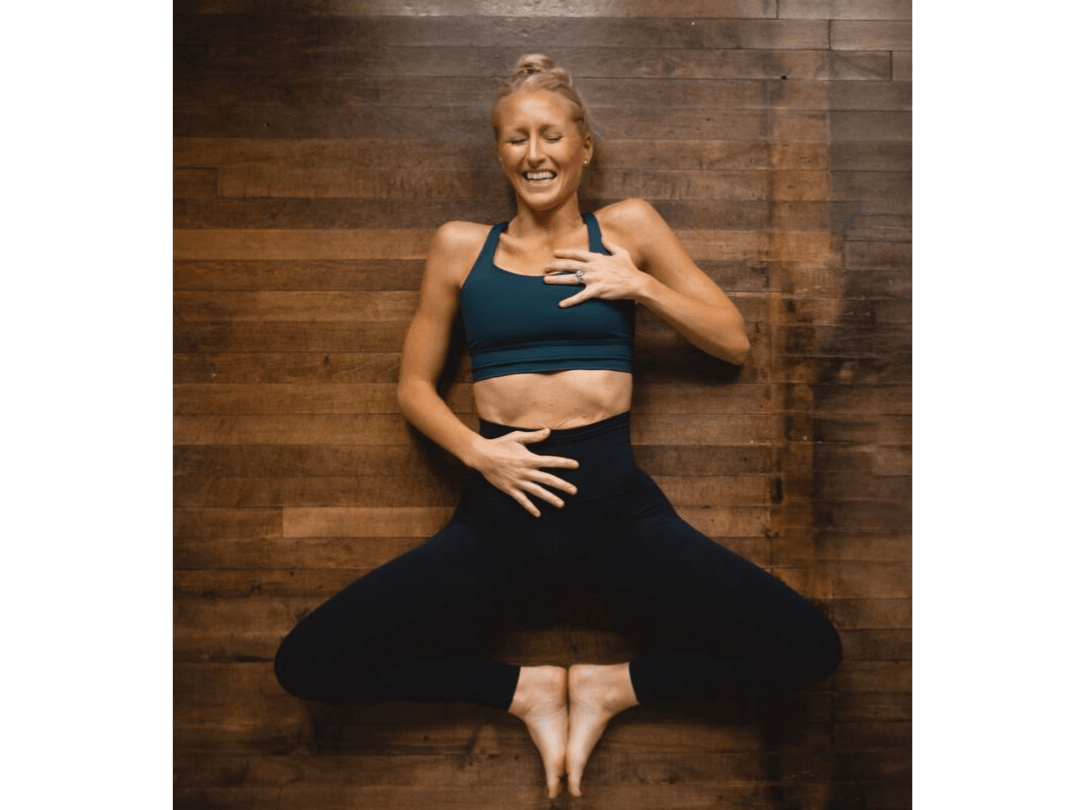
Because the physical act of backbends does challenge our breath, it teaches us how we can react in those challenging moments in life to breathe deep and slow down. These postures require energy, discipline, and trust in our bodies to move in such dynamic ways. And with consistent practice, these traits will begin to pop up in your life off your mat to live in such ways when you meet the moments when you’re at “your edge” or perhaps your tipping point.
Learning to breathe through these moments will only serve you and those around you.
One of my favorite lessons from backbends is reminding myself how I can lead with my heart. Our heart is literally the highest point of our body when we practice backbends and serves as a physical reminder to get out of heads and put our heart first.
Think of a time when you have let your heart guide you rather than your head? My gut tells me you don’t regret doing so.
Our thoughts and ego will put limits on ourselves. We will think that we can’t do something, but when we put the effort behind it, we eventually do it.
Lead with your heart to strengthen not only your entire body but also your entire mindset.
